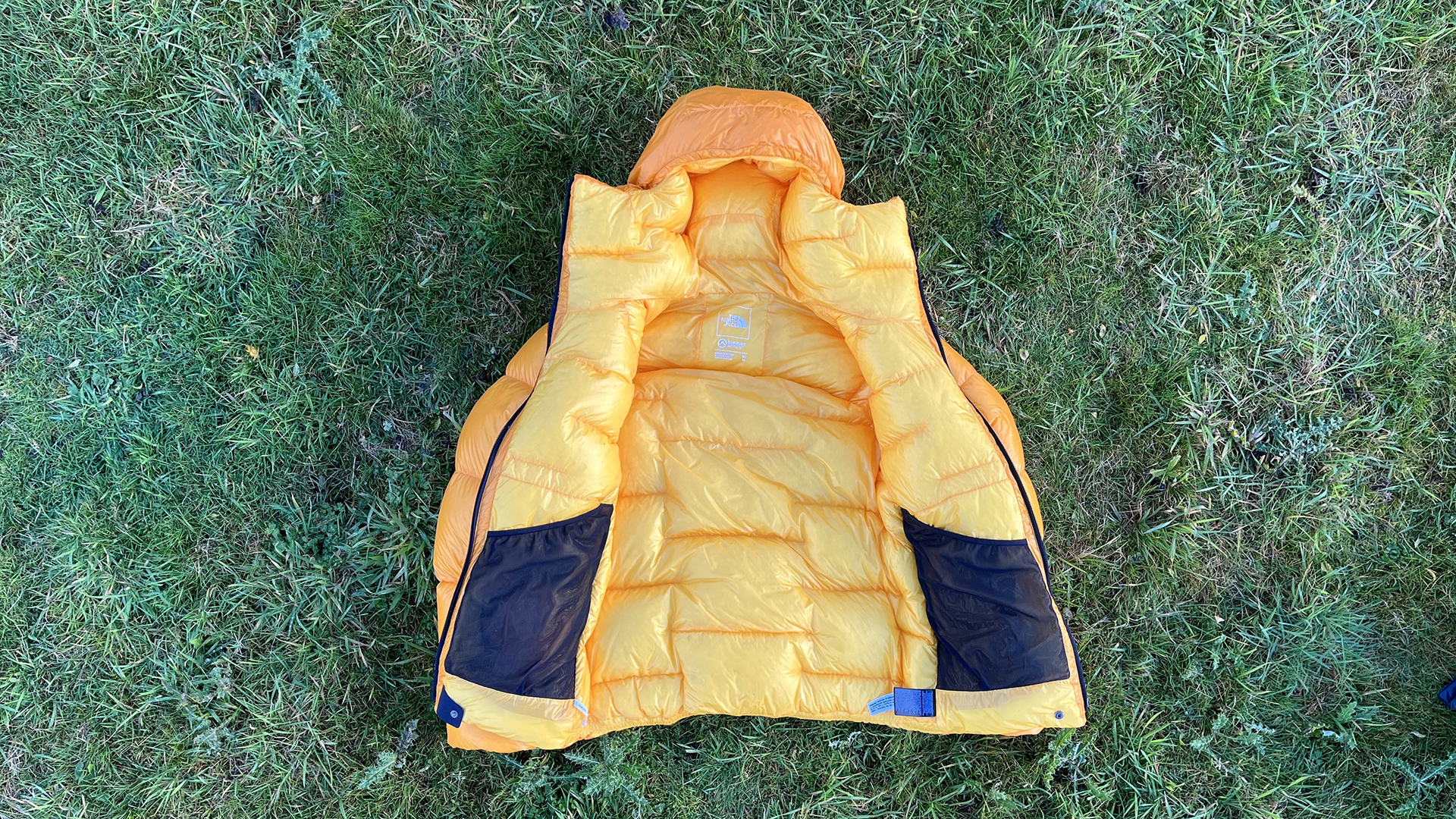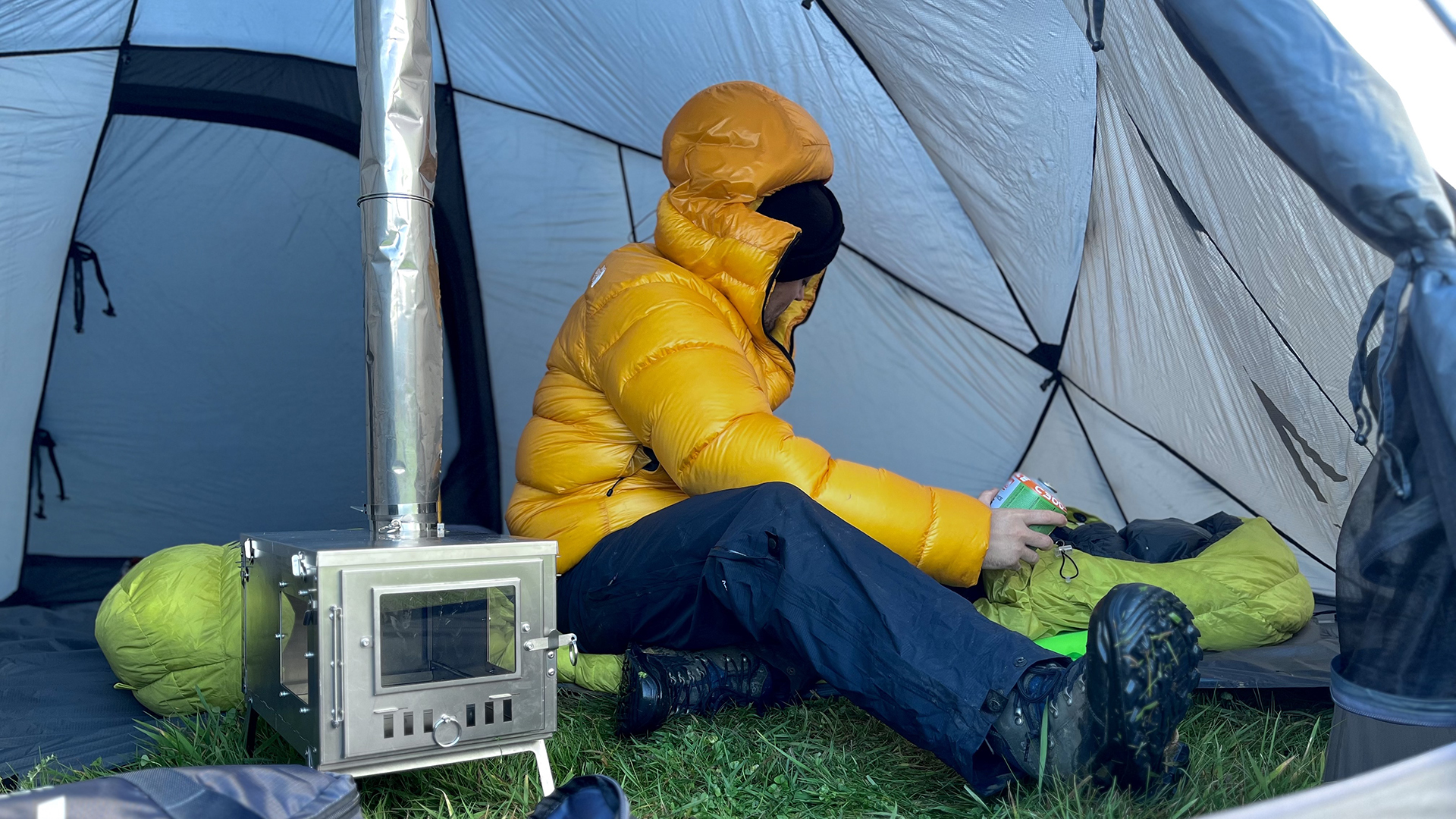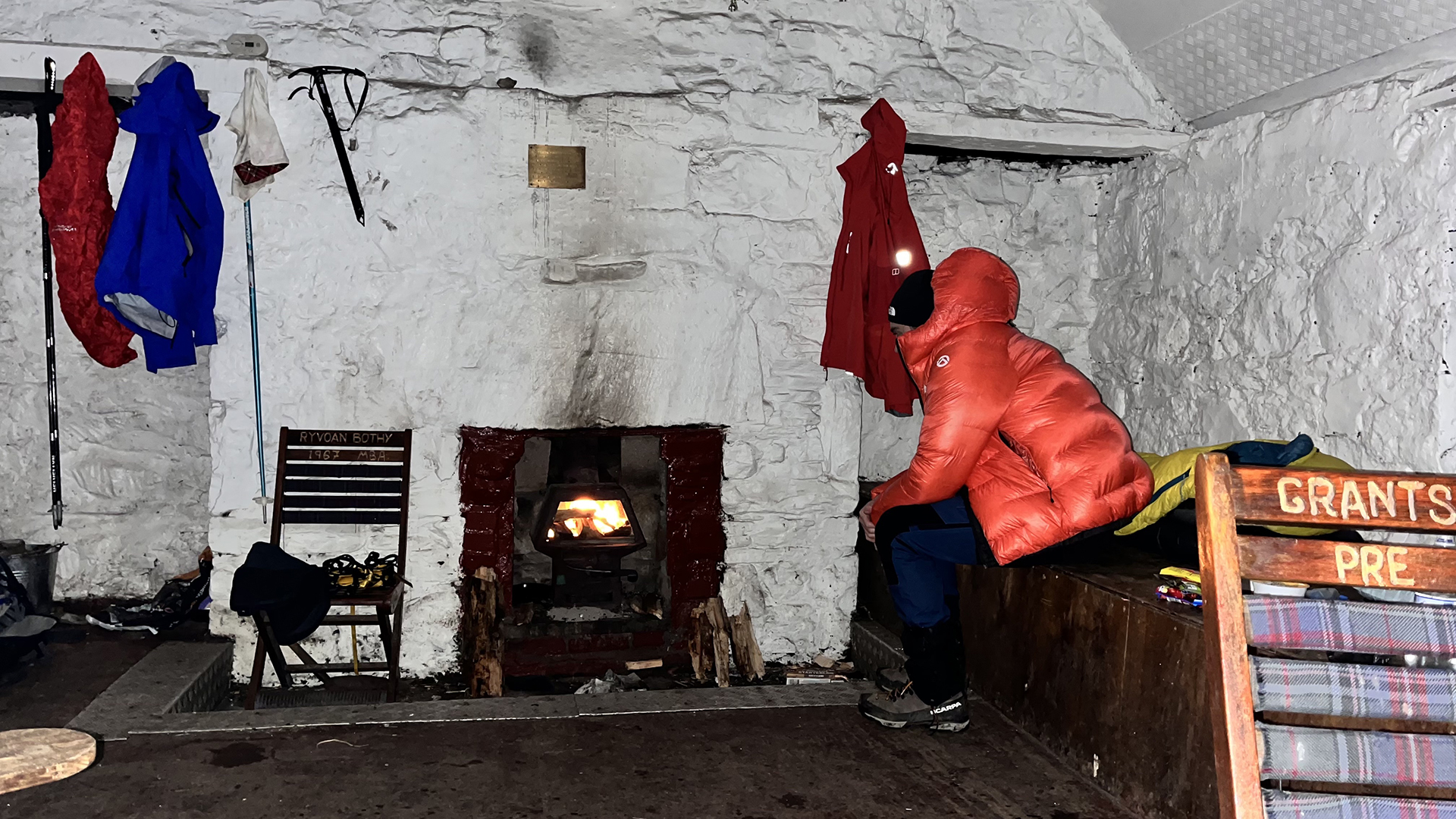
The North Face Summit Series Pumori Down Parka: first impressions
The North Face Summit Series Pumori Down Parka is the most expensive down jacket/layer the company produces (with the exception of its Himalayan Summit Suit), designed to keep you warm on frighteningly cold expeditions, high-altitude mountaineering trips and deep winter wild camping escapades. It's lightweight, packable and technically designed, void of any unnecessary bells and whistles that some belay jackets come with. In that sense, the Pumori is a functional powerhouse, designed and optimised to do one job better than any other jacket out there – to keep you warm in some of the most inhospitable places on Earth.
• List price: $650 (US)/£630 (UK)
• Weight: 538g/19oz (Men's M)
• Sizes: S-XXL
• Fabric: Recycled nylon with non-PFC durable water-repellent (non-PFC DWR) finish, 800-fill ProDown with water repellency
• Colors: Summit Gold, TNF Blue, Radiant Orange
Weighing 538g/19oz for the men's medium, the jacket is lightweight for the job it delivers and packs down to the size of a cantaloupe. It also comes with 800-fill power ProDown, TNF's proprietary hydrophobic down insulation which promises to keep you warm even when wet. What's more, the jacket comes with a helmet-compatible hood, two large internal dump pockets, easy-to-operate handwarmer pockets on the outside and a two-way main zipper that's easy to use when wearing thick winter gloves.
But that's it. The Pumori is decidedly simple; it's totally void of any additional features, such as drawstring cords along the waist and wrist, or even baffles along the zip. It's basically little more than a big nylon bag filled with down – and it'll cost you an eyebrow-raising amount of money (more than $600/£600). So before your eyebrows go so high that you inadvertently do a backflip, let's take a look at how it performs.
The North Face Summit Series Pumori Down Parka: in the wild
I've had my hands on a Pumori for quite some time now. In fact, I've tried two: one in red and one in yellow. I've used them frequently since the start of winter 2023, so I'd guess I've worn a Pumori on at least a dozen days since then. I wore one on a super cold multi-day circular hike around the Western Beacons in November when the mercury hovered around -9°C/16°F, wore one on a freezing December day hike in Finland's Nuuksio National Park when temperatures barely rose above -18°C/0°F, and I took one with me on a three-day wild camping trip through Scotland's Cairngorms National Park in January (where the mercury bounced between just above and just below freezing the whole time).
Ultimately, there's very little to dislike about the Pumori. It's super functional and designed to do a very specific job. And on the whole, I think it does that job very well. It packs down small, lofts up big and keeps you warm in seriously cold temperatures. That being said, however, it doesn't really do anything else. Which might normally seem like an unreasonable expectation from a deep winter down jacket. As this jacket costs so much, however, I think it's fair to expect a little bit more, especially when you compare it with other jackets in this class on the market, such as the Patagonia Fitz Roy or the Rab Neutrino Pro, both of which cost £200+ less than the Pumori. On the bottom end of the price spectrum, there's also the Simonds Makalu from Decathlon, a jacket that comes with the same 800-fill power down and does a very similar job to the Pumori, while costing nearly £500 less.

When it comes to the fit of the jacket, the Pumori is, again, purposefully technical. This jacket is designed to be tossed over all of your other layers, such as harnesses, mid layers or even a dry hardshell when stopping for a brief moment. For that reason, it's got a square cut and runs large – but you'll be glad it does if you wear this thing in the environments it's made for.
One thing I do appreciate about the Pumori is the cut of the hood. It's huge. It's like a space helmet that encapsulates your face. It closes you in and warms you up, and the soft nylon liner is comfortable against your skin and a joy to sleep in when camping in super cold temperatures. Additionally, I also appreciate the clear consideration that's gone into the zippers: they're smooth as butter and are very easy to operate when wearing big winter gloves.

Another niggle I have with the Pumori is the way it looks. Granted, this really shouldn't matter when it comes to coats like this: they're designed to keep you warm in far-flung, cold places, not the local pub. For me, however, this is a constant issue I come back to with these sorts of parkas. Unless you're the type of person who's out mountaineering every weekend through winter, big belay jackets like the Pumori will ultimately become your go-to warm layer on cold winter days. You'll inevitably end up wearing them around town just as often as you do in the hills. For that reason, I find the technical aesthetics of this coat to be a little too much: it's so lofty and boxy that I just don't feel comfortable wearing it around town. And for that amount of money, I'd really like to get more use out of it than the occasional deep winter wild camping trip or the one or two mountaineering escapades I might get out on through the winter.
Naturally, however, this is just one deeply unfashionable outdoor journalist's take. The North Face clearly know what they're doing in the fashion world, and I'm sure loyal followers of the gorpcore trend would be happy to be seen on Oxford Street in the Pumori. It's just not for me.
As is the case with most jackets in this category, the Summit Series Pumori Down Parka is not waterproof at all. The nylon outer has a DWR coating to promote beading and to provide some form of protection in very light rain, but the Pumori quickly wets out in any sustained rainfall. For that reason, if you're using this in wet environments, always pair it with a shell, or just wear it around camp. If it gets wet, it will take hours to dry out, and despite the hydrophobic nature of The North Face's ProDown, wet down loses its ability to properly keep you warm.

The North Face Pumori is made out of 100% recycled nylon which, in my experience, is actually more durable than you might think when you first touch the jacket. It's so soft and lightweight that you'd assume this jacket would rip if you sneezed on it. But even when I caught it on what was either a large splinter or a rusty nail in a bothy in the Cairngorms, the jacket was left unscathed. That said, the coat is still super thin, so you'll need to be careful when you wear it. Don't go pushing your way through dense woodland or scaling sharp rocks in this thing, for example. The North Face also recommends that you wear it under a hardshell where possible to better extend its life.
Overall, I like wearing The North Face Pumori and I'll definitely continue to use it on deep winter trips. It's cosy, comfortable and enjoyable to sleep in. It's also super light for the warmth it delivers and packs down to a tiny package considering the size of the Pumori when lofted. Frankly, however, I think the jacket lacks versatility and leaves me feeling a little underwhelmed considering its phenomenally high price tag. For the same money I could nearly buy two Rab Neutrino Pros, after all. Or I could buy four Simonds Makalu mountaineering jackets from Decathlon. All of which come with the same quality 800-fill power down and deliver near-equivalent levels of performance, even if the Pumori packs down a little smaller.







